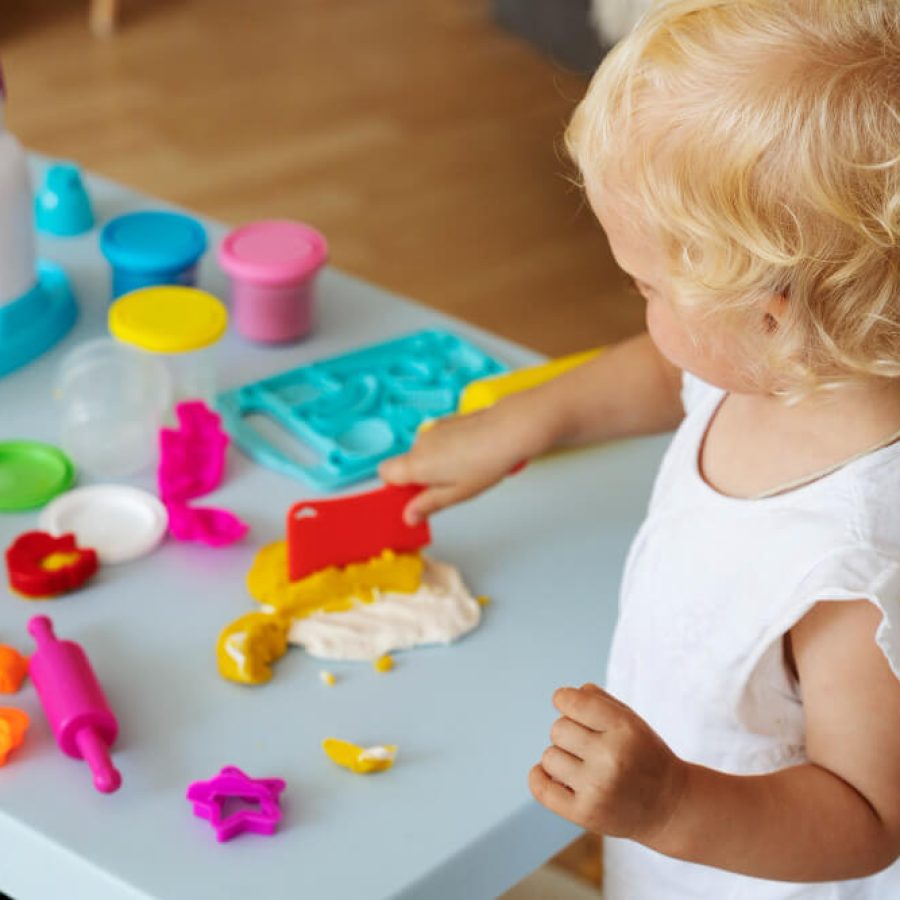We all know that the first encouragement to stimulate children’s learning is to put them to play! When doing that, our Little Ones grow their first understanding of themselves, of the world around them, of the potential of their imagination — all while they’re occupied with their own internal world, or joining a buddy.
However, adapting the possibilities of fun and games is crucial to help children explore all the educational possibilities that come with playing.
So let’s dive into that topic and discuss stages of play.
What Are The Stages of Play?
It’s an ongoing expansion of their social skills. As they advance in each stage, they grow familiar with spending time next to other people, observing them, having their own ideas on how to play and, ultimately, getting a new play buddy.
Stages of play are continuously built as children grow. Each phase and age has its own characteristics, and providing the right stimuli makes a difference in helping children nurture a love for playing and learning new things!
Unoccupied Play (0 – 3 months old)
This stage is experienced when your newborn is learning what playing looks like. Since they’re still experimenting with the world around them, and even themselves, the best you can do is let them have their time to explore!
How to encourage unoccupied play: simply let the newborn decide what their entertainment of choice will be.
It could be a mobile, splashing their hands on water during bathtime, moving their hands and legs when they demonstrate excitement over a toy or a person. All of this represents unoccupied play.
Solitary Play (3 months old – 2 years old)
At this phase, the child is happily playing by themselves. They can get entertained for hours! This is when they are using their imagination and accessing their repertoire to pick adventures and characters to tell a story.
Learning how to solitary play is a process: it relies on the stimuli that the child receives, which means you can get creative!
How to encourage solitary play: again, the entertainment of choice depends on the soon-to-be toddler.
Provide different options of toys to find out what they like the best and what keeps them engaged. While the child is playing, support them by asking questions or showing appreciation of their time enjoying the activity.
Spectator/Onlooker Play (2 years old)
You can guess it just by the name: this is when children get a grasp that there are different ways to do the things they already know.
They observe other children playing and how they interact. They won’t join the fun and play together, but they are observing each other.
How to encourage onlooker play: the secret here is creating an opportunity of having children to interact at the same place and time.
Although they won’t necessarily play together, simply being around one another is enough.
They will observe while each engages in their own world and starts playing. From this point on, let their little brains do the work!
Parallel Play (+2 years old)
Parallel play is different from onlooker because, this time, the proximity between children makes a difference.
Not only are they physically closer, but they can actually start mimicking one another. They can use the same toys to play, but each at their own time and pace.
How to encourage parallel play: again, let children do their thing! Having a buddy playing next to them is enough to stimulate parallel play.
You can facilitate the process by providing similar toys to each child. They will have the same starting point, but each will decide individually how to interact with the objects.
Associative Play (3 – 4 years old)
By this time, children are getting closer to engaging together in the same activity, but not quite completely.
At this stage, they are playing next to each other and they interact about what they are doing at the moment.
It’s not a full playtime together, but they are expanding their attention beyond what they are doing.
How to encourage associative play: stimulating activities that children can easily observe one another, but also get back to paying attention to what they were doing previously. Drawing, painting, having different cars in the same track, playing with playdough
Cooperative Play (+4 years old)
This represents the ultimate milestone of playing together: at this point, children collaborate and play together. They are not only physically next to each other, but one participates in the story that the other is telling.
This is when they combine their repertoire and create something together. This can also be the time when conflict arises, because not necessarily they will agree with one another.
However, overcoming the dispute is also part of the growing process, and they get to learn that by spending time playing with other kids!
How to encourage cooperative play: at this time, parents will likely have a bigger influence.
It’s up to them to gather children, provide a safe ambience, and maybe take the first step in breaking the ice between kids — perhaps by telling to the other what each likes and suggesting a game or toy.
Don’t worry: this connection won’t necessarily happen every time the kids meet! Soon they’ll grow their own relationships and establish their favorite playtime with buddies from school or the neighborhood.
Encouraging Playtime According to Stages of Development
As you can see, there are so many phases to cross as children evolve from infants into childhood.
As parents and educators, the best we can do to promote that is to learn what the best toys are according to each development stage and provide a safe place to play.
Also, encourage children to play by demonstrating you’re happy that they’re doing it, asking questions, and joining the fun when possible.
After learning what are the stages of play, the next step is understanding the importance of doing things together as a family: learn the value of spending time together!


